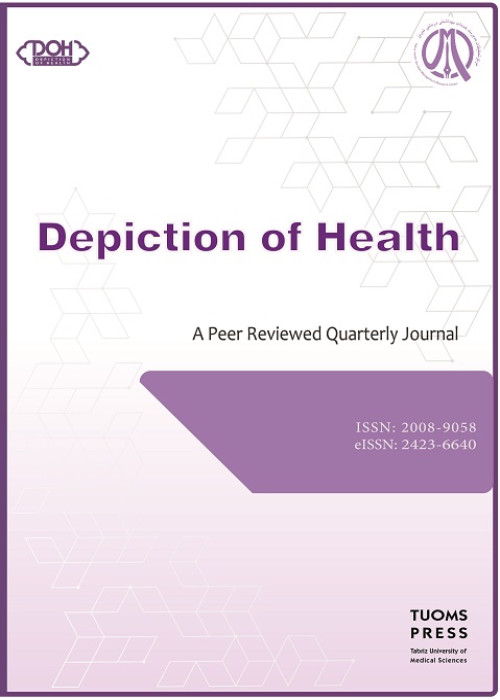The Study of Congenital Anomalies Resulting in Legal Termination of Pregnancy in Iran
Author(s):
Abstract:
Background And Objectives
Safe pregnancy is among the goals and missions of reproductive health which has an important part in Millennium Development Goals. Unfortunately, bad conditions in reproductive health are the major cause of women mortality in fertility age all over the world especially in developing countries. Congenital anomalies are pregnancy problems that in case of early diagnosis, the anomaly will be done according to list 51. The aim of this study was to determine families’ demographic situations, frequency of congenital anomalies types and the factors of legally termination of pregnancy to suggest solutions in order to reduce anomalies and promote reproductive health.Material And Methods
This is a case-control study carried out for 1 year period from 2010 to 2011 in which 603 pregnant women that were diagnosed/recommended to the Legal Medicine Organization for the termination of pregnancy as having a fetus with some types of birth defect(s). Among them, 201 were categorized as case group (receiving termination permission because their pregnancy was before week 20) and 402 of them were categorized as control group 1 (not receiving termination permission because their pregnancy was after week 20) and 200 women as control group 2 who referred to Alzahra hospital to give childbirth. A questionnaire containing demographic and geographical information was made for all the women in those three groups.Results
The average age of mothers in this study was 27.2 years (15-47 years old). In 100 % of women, at least 1 ultrasound examination was performed and genetic and Amniocentesis tests were conducted in 2.1 % and 3.5 % respectively in order to diagnose anomaly. In total, 33 % of pregnant women with congenital anomalies received pregnancy termination permission. The majority of congenital anomalies were neural tube defects 16.9 %, hydrocephaly 8.6 %, limb deformation 7.7 % and Down syndrome 6.4 %. Mother’s age, the history of anomaly in previous child and Folic acid usage during pregnancy, according to the meaningfulness of both regression models, are the main predictive independent factors. (P<0.05)Conclusion
By determining the causing factors of congenital anomalies and removing the shortcomings and weaknesses, it is possible to reduce the number of these anomalies and take major actions to promote the health of mothers and children.Keywords:
Language:
Persian
Published:
Depiction of Health, Volume:3 Issue: 2, 2012
Page:
11
magiran.com/p1474645
دانلود و مطالعه متن این مقاله با یکی از روشهای زیر امکان پذیر است:
اشتراک شخصی
با عضویت و پرداخت آنلاین حق اشتراک یکساله به مبلغ 1,390,000ريال میتوانید 70 عنوان مطلب دانلود کنید!
اشتراک سازمانی
به کتابخانه دانشگاه یا محل کار خود پیشنهاد کنید تا اشتراک سازمانی این پایگاه را برای دسترسی نامحدود همه کاربران به متن مطالب تهیه نمایند!
توجه!
- حق عضویت دریافتی صرف حمایت از نشریات عضو و نگهداری، تکمیل و توسعه مگیران میشود.
- پرداخت حق اشتراک و دانلود مقالات اجازه بازنشر آن در سایر رسانههای چاپی و دیجیتال را به کاربر نمیدهد.
In order to view content subscription is required
Personal subscription
Subscribe magiran.com for 70 € euros via PayPal and download 70 articles during a year.
Organization subscription
Please contact us to subscribe your university or library for unlimited access!


